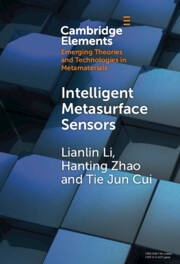Element contents
Intelligent Metasurface Sensors
Published online by Cambridge University Press: 20 December 2023
Summary
Keywords
- Type
- Element
- Information
- Online ISBN: 9781009277242Publisher: Cambridge University PressPrint publication: 01 February 2024
References
- 2
- Cited by

